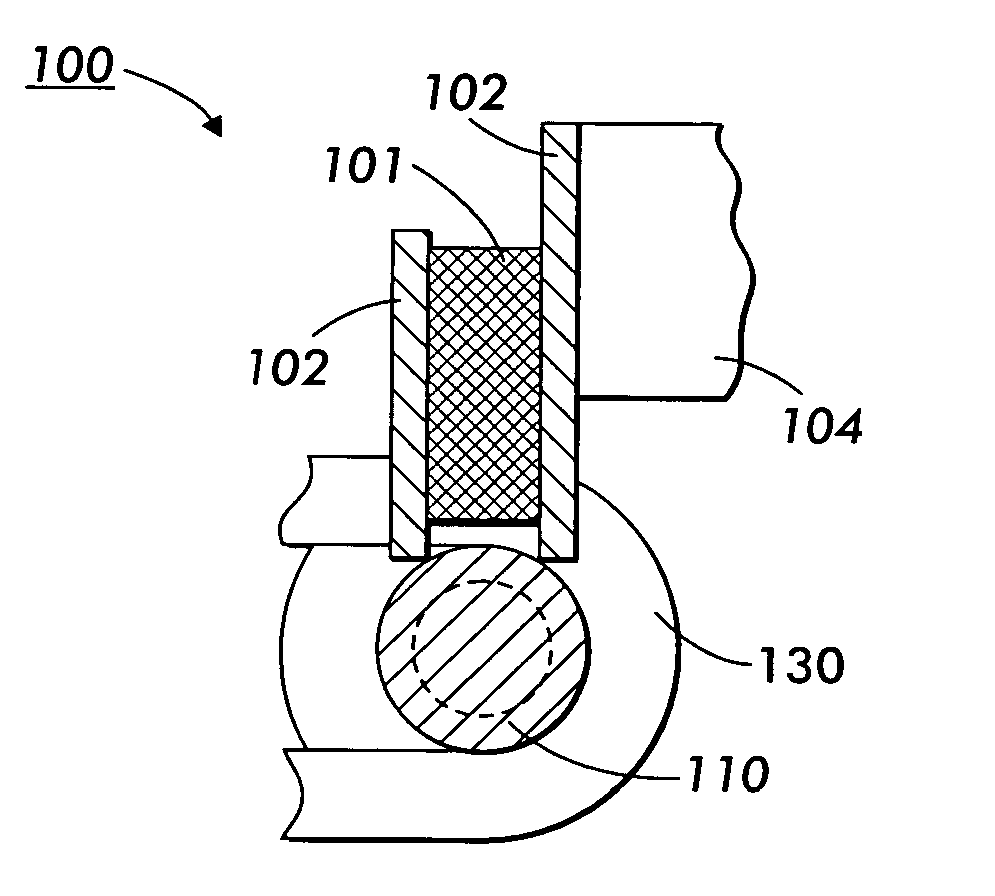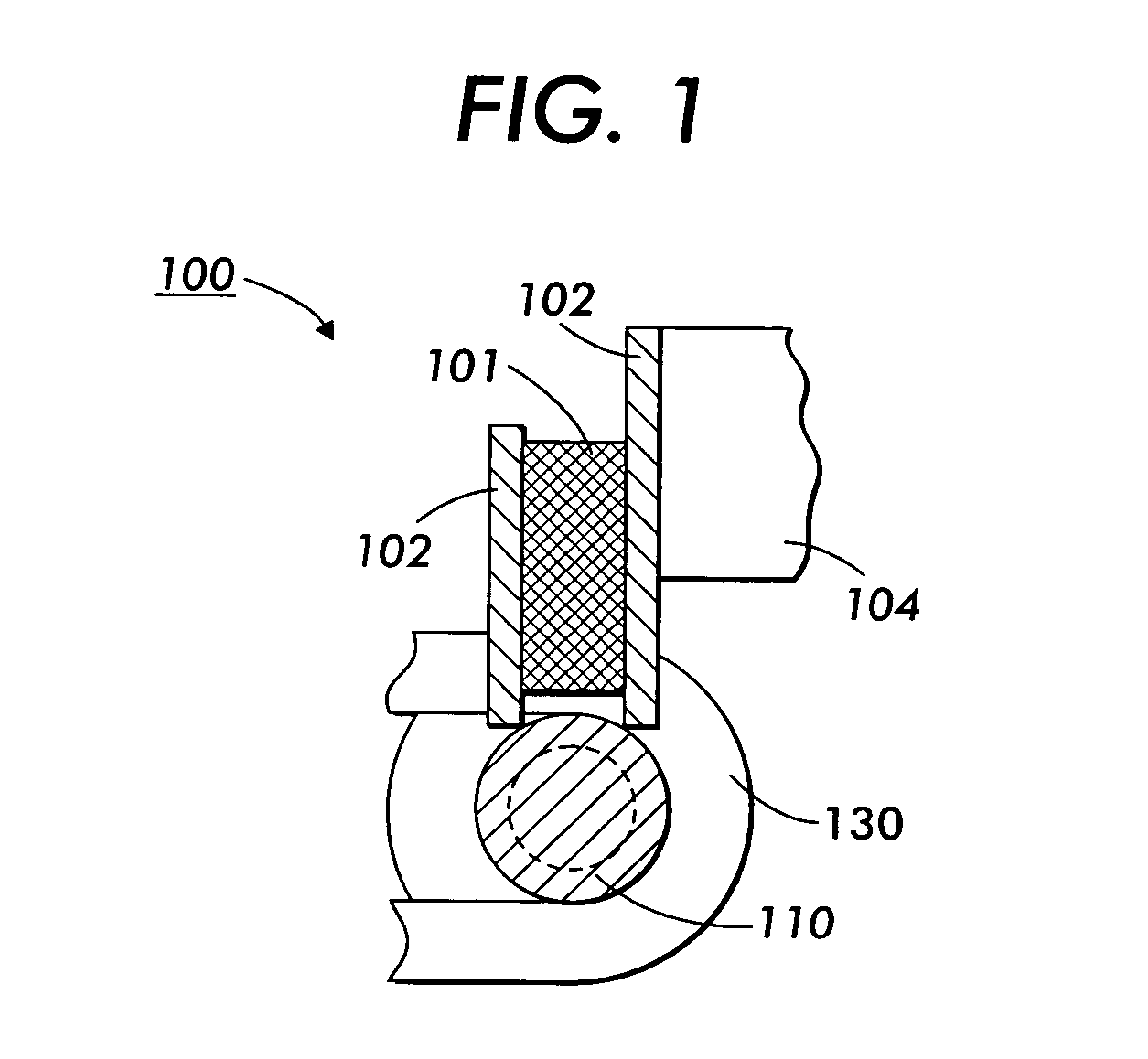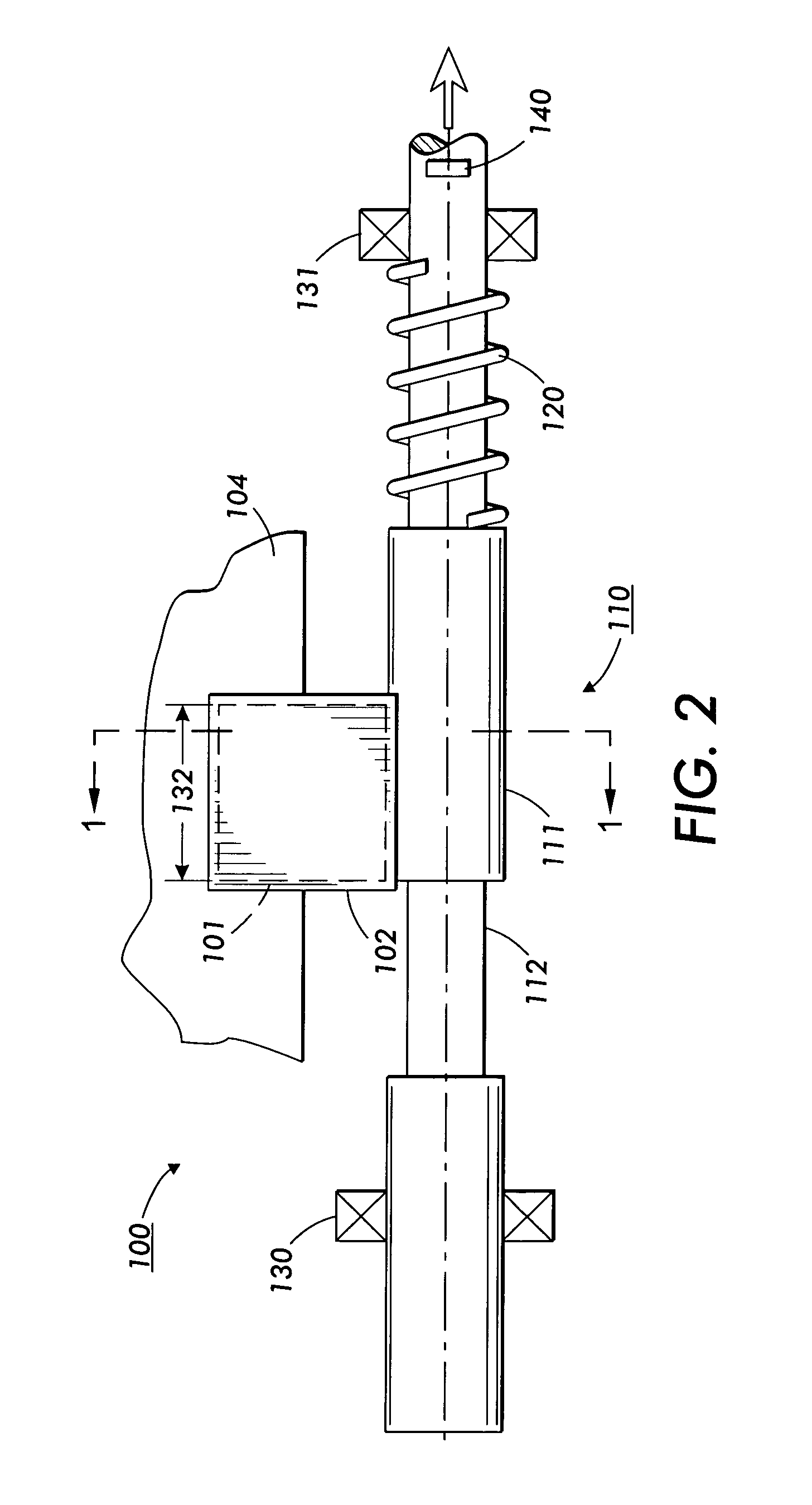Magnetic latch and release apparatus
a magnetic latch and latch technology, applied in the field of magnetic latch and release apparatus, can solve the problems of “stickiness” of the latch, the “stickiness” of the magnetic latch can be problematic, and the person may have very little leverage or room, and achieve the effect of simple latch device, low price, and rapid dissipation of the intensity of the magnetic field
- Summary
- Abstract
- Description
- Claims
- Application Information
AI Technical Summary
Benefits of technology
Problems solved by technology
Method used
Image
Examples
Embodiment Construction
[0014] For a general understanding of the present invention, reference is made to the drawings. In the drawings, like reference numerals have been used throughout to designate identical elements.
[0015] Referring first to FIG. 1, a schematic cross sectional view is shown of one embodiment 100 of the invention. In this view, magnet 101 is shown with twin strike plates 102. Strike plates 102 can be of any metallic or other material through which a magnetic field can be transmitted. Magnet 101 and strike plates 102 are mounted to an enclosure body by attachment to support member 104. Support member 104 may be part of the enclosure that moves during opening or may be part of the enclosure body, and rod 110 may similarly be positioned opposite support member 104 on either the door or the enclosure body. Support bracket 130 is shown wrapping around rod 110 in order to slidably mount rod 110 in the panel or other member to be latched to member 104.
[0016] The magnet and strike plate assemb...
PUM
 Login to View More
Login to View More Abstract
Description
Claims
Application Information
 Login to View More
Login to View More - R&D
- Intellectual Property
- Life Sciences
- Materials
- Tech Scout
- Unparalleled Data Quality
- Higher Quality Content
- 60% Fewer Hallucinations
Browse by: Latest US Patents, China's latest patents, Technical Efficacy Thesaurus, Application Domain, Technology Topic, Popular Technical Reports.
© 2025 PatSnap. All rights reserved.Legal|Privacy policy|Modern Slavery Act Transparency Statement|Sitemap|About US| Contact US: help@patsnap.com



